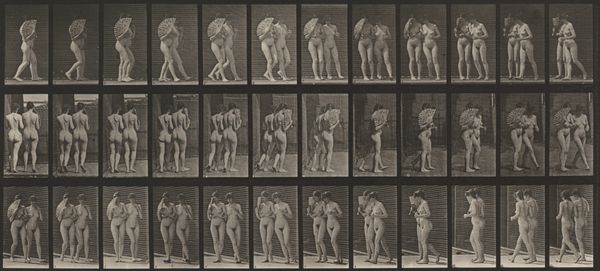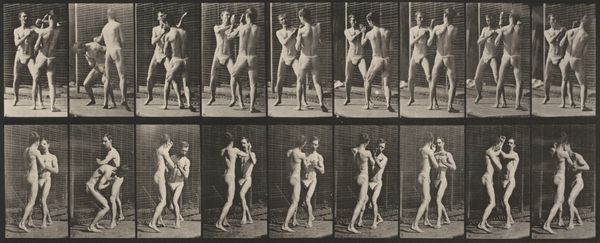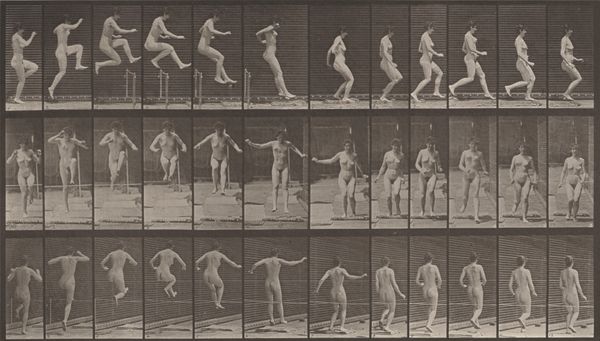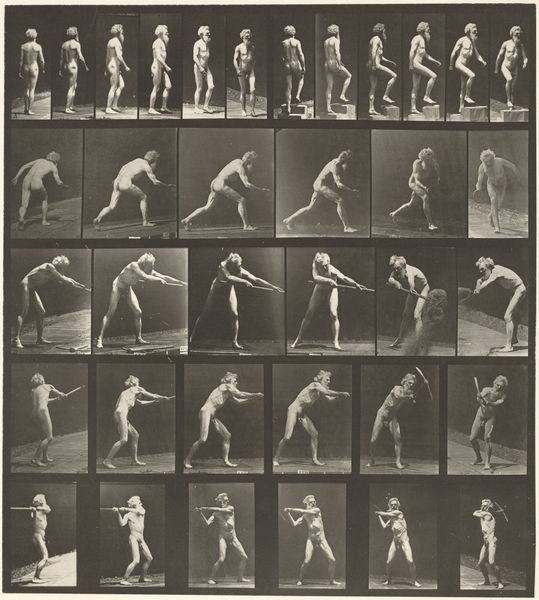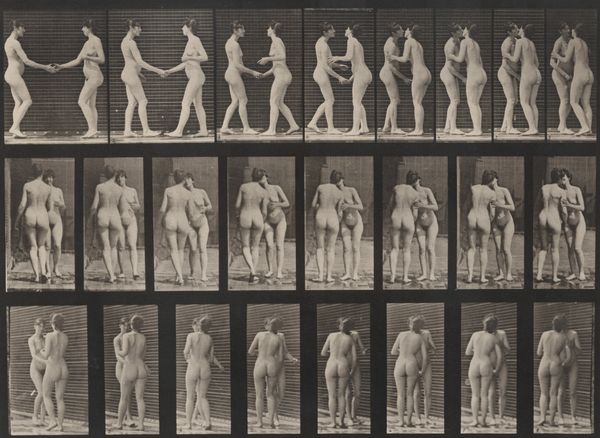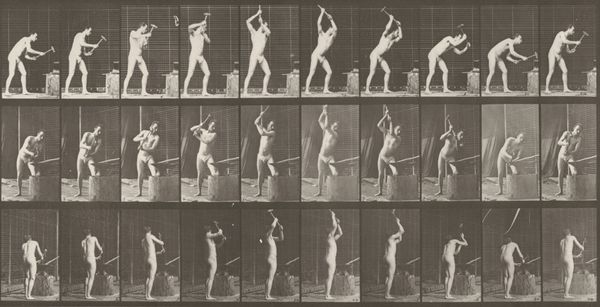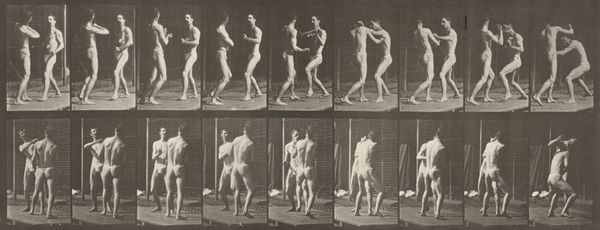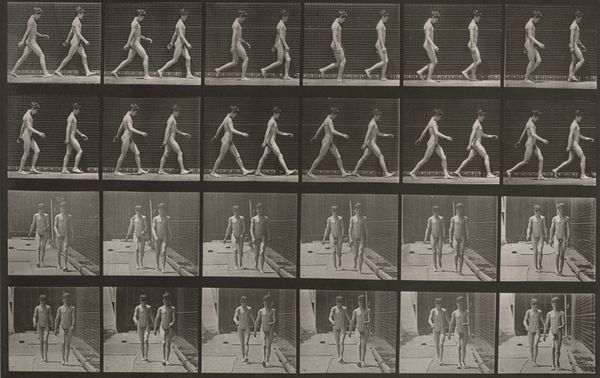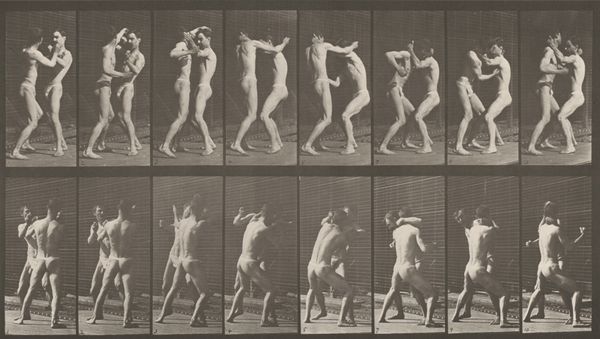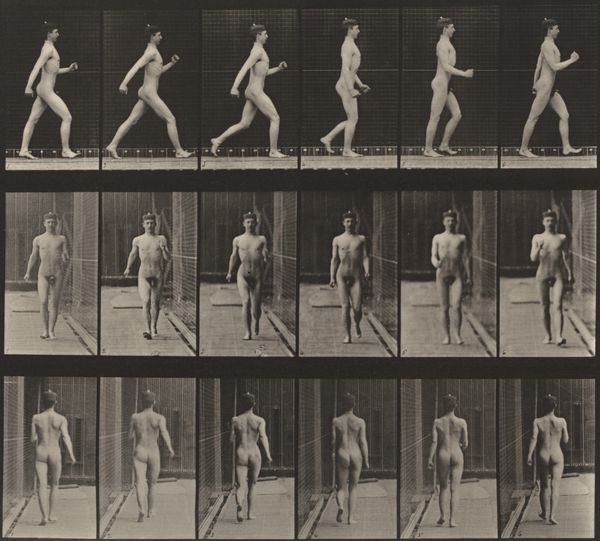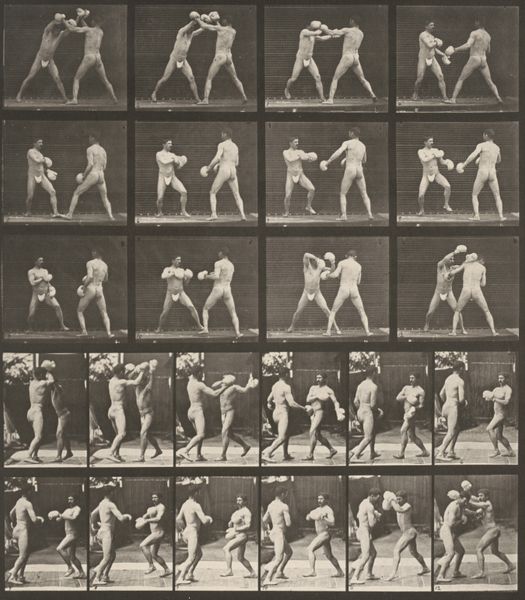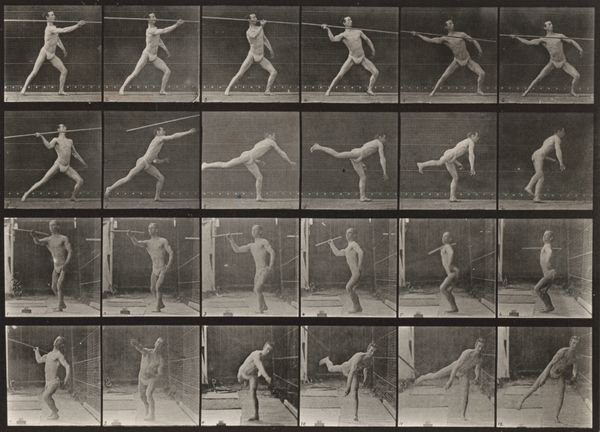
Plate Number 245. Two models, turning around, sitting on the ground 1887
0:00
0:00
print, photography, photomontage, gelatin-silver-print
# print
#
sculpture
#
figuration
#
photography
#
photomontage
#
gelatin-silver-print
#
nude
#
modernism
#
realism
Dimensions: image: 26 × 27.9 cm (10 1/4 × 11 in.) sheet: 47.7 × 60.4 cm (18 3/4 × 23 3/4 in.)
Copyright: National Gallery of Art: CC0 1.0
Curator: It’s mesmerizing, isn't it? All these discrete moments captured within one gelatin-silver print. There is something almost dreamlike in the arrangement. Editor: Indeed! This is plate number 245 from Eadweard Muybridge's *Animal Locomotion*, taken in 1887. These photographic studies weren't created in a vacuum; they were tied directly to Muybridge's funding and commissions within the University of Pennsylvania, as well as representing a significant step in the development of photography and motion study. Curator: It's striking how it dissolves the illusion of stable identity through photographic process; a continuous dance constructed out of distinct photographic cuts. The print invites contemplation of the body as material and also an object in time. It gives emphasis to production process. The act of taking numerous pictures. It presents both a static collection of items while at the same time an almost dreamlike animation of figures. Editor: Absolutely. Muybridge wasn't just after scientific accuracy. *Animal Locomotion* gained popularity and generated money partially because of its engagement with both aesthetic ideals and contemporary attitudes regarding the human body. In this photograph, it presents the female form for educational objectives while yet fitting in with prevalent aesthetic ideals. Furthermore, images such as this circulated in a social and cultural landscape increasingly obsessed with visualizing and controlling movement and bodies. Curator: So true, we shouldn't disregard the relationship between Muybridge's work and the growing commodification of image-making during that era. What do you consider to be the modern equivalent to this technology when discussing photographic materialism? Editor: Perhaps CGI or deepfake technologies that allow us to reanimate the dead for film. The same set of questions about authenticity, labor, and even what it means to be human comes up again. This image reminds me that no artwork is ever completely detached from the socio-political dynamics that produce it. Curator: Agreed! It makes me curious about what current developments in our creative process, enabled by technology and impacted by socioeconomic circumstances, we may not comprehend just yet.
Comments
No comments
Be the first to comment and join the conversation on the ultimate creative platform.
